Over 200 people came together at the Governor’s Local Food and Agriculture Summit held at the end of October on the Montana State University (MSU) campus in Bozeman. They strategized about the future of Montana’s food economy and spent significant time in topical tracks learning and sharing information as they identified goals and created action plans. Outside of the track deliberations, plenary sessions featured inspiring keynote addresses, and MSU Catering provided meals chock-full of food from Montana producers.

Keynote speakers Michael Shuman and Fred Kirschenmann joined Montana Department of Agriculture Director Ron de Yong in a discussion near the end of the Governor’s Local Food and Agriculture Summit.
Most of the tracks kicked off with a keynote presentation and a panel to provide a lay of the land. These speakers and panelists included a wide range of stakeholders in local food economies, including producers, processors, distributors, purchasers, academics, and healthcare workers. A list of these folks for each track can be found on the Summit website’s track pages. Following these overviews, the track attendees got to work identifying challenges and opportunities before choosing goals and crafting action plans. One of the Summit’s final sessions involved each track reporting to the entire Summit about their action plans and goals.
In between all of the dedicated work in the tracks, Summit attendees heard inspiring remarks from sustainable-agriculture expert Fred Kirschenmann and economist Michael Shuman. Kirschenmann discussed the need for us to build more sustainable systems and communities, while Shuman explained how local food systems could be integral parts of local economic development. These two keynote addresses were streamed live and recorded. They can both be watched at the Summit’s website. The Summit closed with a conversation between Kirschenmann, Shuman, and Montana Department of Agriculture Director Ron de Yong reflecting on their thoughts about the Summit and the upcoming work that had been identified.
The Grow Montana Food Policy Coalition, which is housed at NCAT and convened the Summit, is now putting together its initial follow-up pieces. Grow Montana will be sending out an online evaluation for the Summit to all who attended in which people can indicate their desire to be part of ongoing work groups. The coalition is also compiling the action plans developed by the tracks, which will be distributed to attendees and posted on the Summit’s website. Both of these tasks will be completed by the end of November. At that point, Grow Montana will start drafting a comprehensive final report for the Summit that will capture and present the information shared during the work sessions in the tracks. Check the Summit’s website occasionally for new postings related to the Summit.


